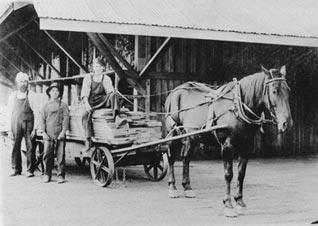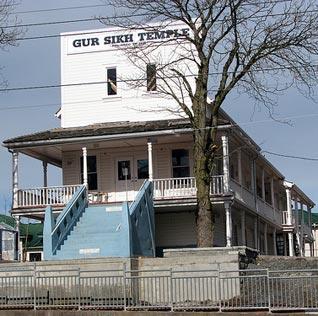History
First Sikhs in Abbotsford Met With Hospitality
by SHARANJIT KAUR SANDHRA
This article - part of a series - commemorates the centennial of the GurSikh Gurdwara in Abbotsford, British Columbia, Canada (est. 1911).
BEGINNINGS: 1900-1910
The first Sikhs to ever arrive in British Columbia were on an official trip - at the invitation of the Canadian government - as part of the Sikh soldier contingents heading back home after having wowed the crowds in London, England at the commemoration of Queen Victoria's Diamond Jubilee in 1897.
Following this initial visit, a second contingent of Sikh and Punjabi soldiers similarly toured British Columbia while returning from England from the coronation of King Edward VII in 1902.
Arriving in Victoria on the Empress of Japan, on June 3, 1902, it was this group of Sikhs - already being subjects of the British empire, of which Canada was a part - who became intrigued at the possibilities of settling down as farmers in British Columbia. The larger community tended to treat the Sikh soldiers with respect, as papers exclaimed, "Turbaned Men Excite Interest: Awe inspiring men from India held the crowds."
The first few Sikhs arrived in the Fraser Valley directly from Punjab in 1905 and settled in the Valley by working on the farms and in the forestry industry. Almost all the men who arrived in British Coilumbia worked in labour industries such as forestry, fishing and the railway. On average, these men earned from $1 to $1.25 a day, which was less than the pay received by Caucasian workers. Wages being so low and discrimination rampant, most Sikh men lived together, with often between 20 to 50 men living under the same roof.
The Abbotsford Lumber Company, owned by the Trethewey family, employed many of these Sikh workers who first came to the Fraser Valley. It was the Trethewey family who also donated the lumber, which was carried on the backs of Sikh men, so that they could begin the construction of the first Gurdwara in the Fraser Valley, today designated as the National Historic Site Gur Sikh Gurdwara, located on South Fraser Way.
After 1906, Sikh migration into British Columbia increased, and the racial tensions which had for those early years remained at bay also became a reality. That year some 700 Sikhs arrived, and the Canadian government took notice. Furthermore, because employers preferred to hire Sikhs due to their work ethics and lower pay, many Caucasian workers resented their presence in Canada. Racial chaos ensued from 1906 onward, as Sikhs were laid off from work, barred from public facilities, evicted, physically abused by people and the police, as well as in the local press.
On Jan. 8, 1908, an Order-in-Council required any immigrant entering Canada to arrive on a continuous journey from his or her country of origin. This ban hit the Sikh and Japanese immigrants hardest, hindering the wives and children of even those men who already lived in Canada, from immigrating. This 'continuous journey' legislation formed the backdrop of one of the darkest episodes in Canadian history, The Komagata Maru tragedy.
The author is at the Centre for Indo-Canadian Studies, University of Fraser Valley, British Columbia, Canada.
[Courtesy: BC Local News. Edited for sikhchic.com]
February 14, 2011
Conversation about this article
1: Amarjit (Seattle, U.S.A.), February 16, 2011, 7:20 PM.
Enjoyed reading this article about the first Sikhs in British Columbia.





